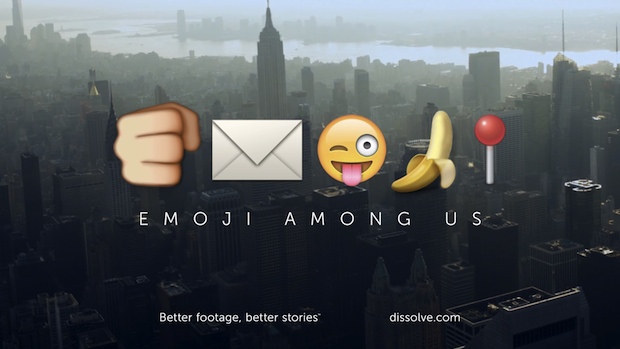Here is a documentary called Emoji Among Us, now available on Dissolve.
This short documentary (more like a trailer for a documentary) declares that emoji have become infused in our lives and communication, but are not always fully understood. Not surprisingly, the footage makes ample use of emoji-style characters.

As the makers say: “Emoji have become an inescapable part of our daily lives. This short film examines the far-reaching impact these very special characters have had on our society. Made entirely with footage from Dissolve… and 68 of our emoji friends.”
British viewers will immediately note how the narration apes the David Attenborough style of nature documentary that have been such hits for the BBC over the years.
“Since they first appeared on our shores earlier this decade, these charming and versatile figures have capture our hearts,” as the opening intones.
Before you get too excited, we should point it’s not actually Sir David, though, but apparently a voice actor called James Gillies. However, as the narration heavily hints, this whole documentary is kind of a spoof of TV nature shows.
As opposed to the American-made emoticon, emoji are of course a Japanese invention. The name means “picture word” or “picture character”, and so emoji are typically pictographic. First created by Shigetaka Kurita at NTT Docomo for the pioneering i-mode platform in order to lure all-important young users back to the digital fold, emoji were a hit as they allowed users to inject some cuteness and fun into their messaging. Not just a gimmick for youngsters, though, emoji in fact could be very useful in helping navigate communication when Japanese can be ambiguous. What may sound formal or cold is nonetheless often a standard response to something, and with an emoji added, the intended warmth and friendliness properly comes through. Eventually emoji conquered the world.
While emoticons and emoji can be used in the same way and as names are sometimes used interchangeably, they are technically created in different ways (most obviously, emoticon come from user-generated text) and emoji are ultimately limited since they are predefined images in code form that your computer or phone reads.





















